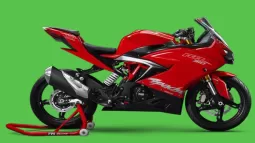
ISRO made history with SpaDex Space Docking Technology: The Indian Space Research Organisation (ISRO) gifted the nation with a fine achievement just before New Year, which can be described as a symbolic "Happy New Year" for the nation. With this achievement, India has joined the exclusive club of countries which proved its capability to dock two satellites in space like that of China, Russia and the United States.
The Polar Satellite Launch Vehicle-C60, or PSLV, was launched on Monday at 10:15 PM from the Satish Dhawan Space Centre (SHAR) in Tirupati district. In less than 15 minutes of lift-off, the SpaDex-1B and SpaDex-1A satellites separated from the rocket, which is the first time for India in the advanced space docking technology.
Key Features of SpaDex Mission
ISRO's most ambitious experiment is the SpaDex mission. PSLV-C60 has launched two satellites weighing 420 kg each to their orbit. The satellites are well-equipped with advanced technology that will be used to test the capability of docking. Docking is an essential step to achieve multi-satellite mission goals and complex space station operations.
PS4 Orbital Experiment Module: A Unique Initiative
The PSLV-C60 mission will carry along PS4-Orbital Experiment Module, POEM-4, equipped with post-launch microgravity experiments. This module will survive the three months in orbit with enabling many scientific experiments there within.
- Payloads:There are 24 payloads inside of POEM-4; 14 of the total are from ISRO whereas the rest 10 were from startups and various NGOs.
- Research Focus: These experiments are targeting the application of microgravity and expanding scientific knowledge for space.
Space Traffic Delays PSLV Launch
The PSLV-C60 launch was delayed from its scheduled time of 9:58 AM and was launched at 10:15 AM. ISRO Chief Dr. S. Somnath said this was due to a traffic jam in orbit because many satellites were on the prescribed trajectory.
This is a test representing more crowding of Earth's lower orbit, particularly by satellite constellations like Starlink. So far, around 7,000 such satellites are active. ISRO too has sometimes been tardy in the past and one example is the Chandrayaan-3 of 2023.
Speech by ISRO Chief
Speaking on the space docking technology turning out to be crucial for India's next missions, Dr. Somnath said:
"Docking technology is the need for the jointly achieved mission objectives: construction of the Indian Space Station and Chandrayaan-4 operations. And we become one of the global players with Russia, China, and the US in achieving that milestone," he added.
He further said, "The SpaDex satellites, placed 20 km apart now, shall be brought closer within a week and shall start functioning in the orbit by January 7." Along with this scientific experiments onboard POEM-4 will go a great way in filling up most of the items on the ISRO's research agenda.
Future Ahead: Planning of ISRO
The successful SpaDex mission marked the 99th launch from Satish Dhawan Space Centre. ISRO is planning for the launch of GSLV early in 2024. This will carry forward its legacy of spectacular space-related achievements.













